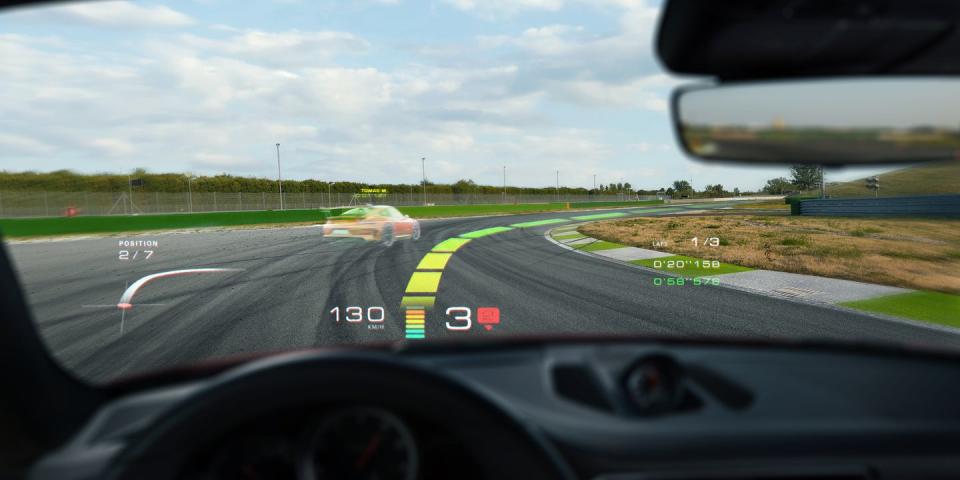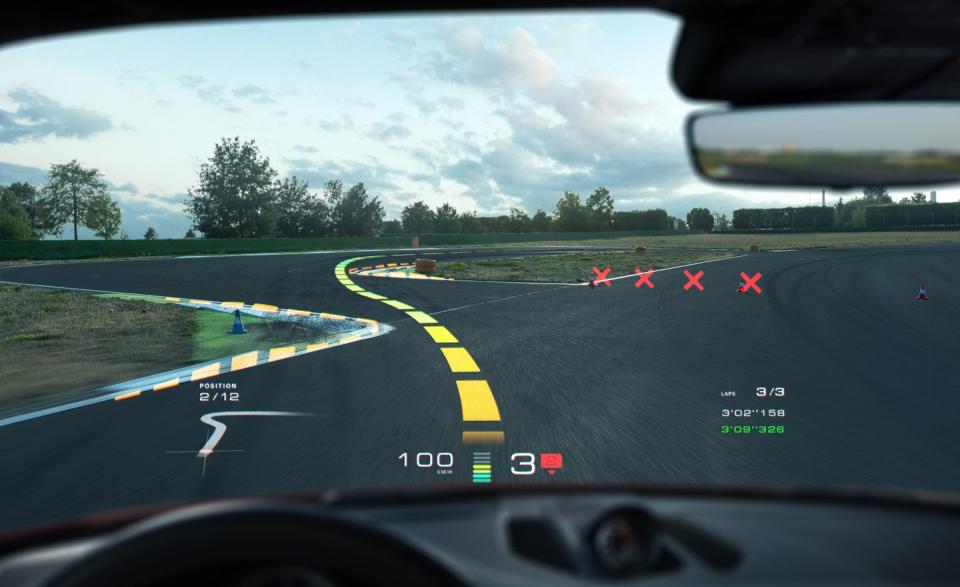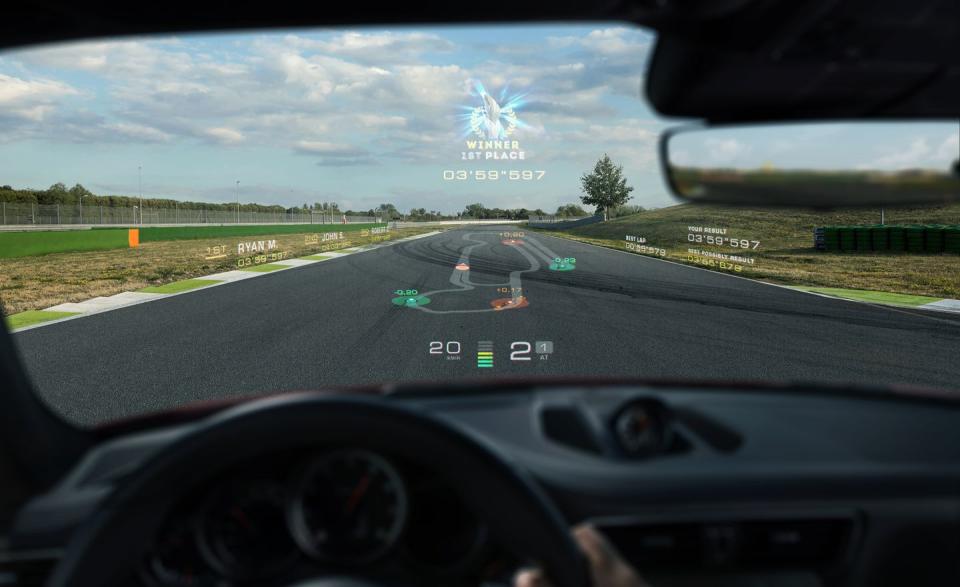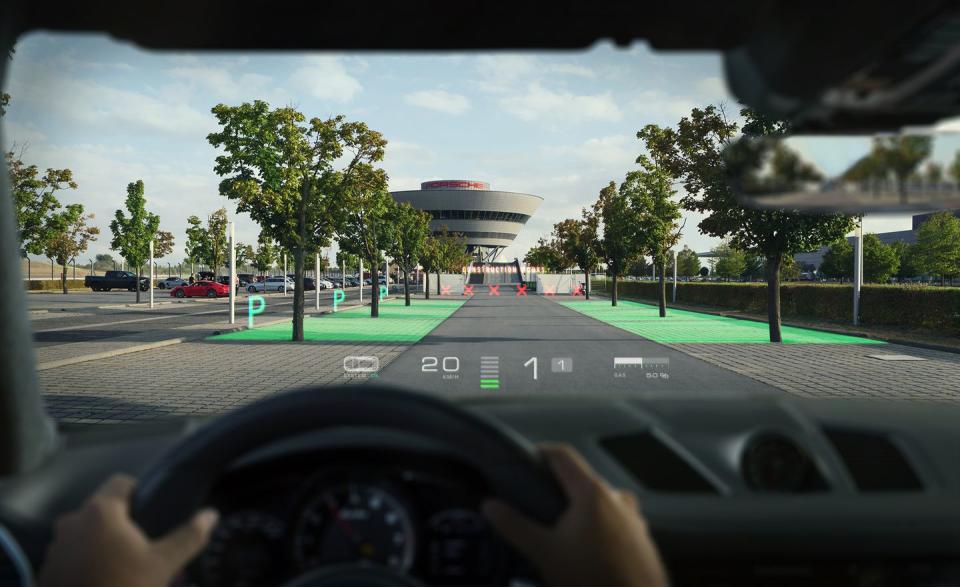Porsche Invests to Get Bigger, Better Augmented-Reality Head-Up Displays in Future Cars

Porsche and Hyundai have announced they have joined a group of investors in a Swiss startup called WayRay. The tieup could lead to better augmented-reality technology in vehicle head-up displays. The companies' $80 million investment will help WayRay develop customizable holographic systems to supply information ranging from navigation to racetrack data.
Whereas the head-up displays in current production cars are relegated to simpler, smaller displays projected directly in front of the driver, WayRay's systems could cover the entire windshield thanks to a holographic film embedded into the glass. The tech has both a smaller projector and a much wider field of view than any current head-up display, with WayRay boasting that no competitor can match its parameters. WayRay's systems are fully customizable and can be adapted for use in any kind of vehicle, from sports cars to luxury sedans and autonomous cars.

Lutz Meschke, Porsche deputy chairman, said that by leading the investment into WayRay, the automaker is looking to be able to offer "customized solutions" to its customers. The displays, shown in renderings from WayRay, could be used in Porsche's 911 sports car to supply real-time information while driving on a racetrack. Lap times, track position, racing lines, and video-game-like "ghosts" could all be projected onto the screen, in addition to typical head-up info such as speed and current gear. Another image shows a graphic displayed at the end of a race, with a map of the track, the driver's times for individual sectors, and a "best possible result."
Hyundai, on the other hand, wants to use the WayRay's collaboration to "establish a new ecosystem" that will use the holographic displays to enhance the navigation systems in its cars. Hyundai also wants to use WayRay's nonautomotive augmented-reality technology for "smart cities and smart buildings," which are long-term business interests for the Korean brand.

This isn't the first time that Porsche has dabbled in augmented reality. Earlier this year, the automaker announced a plan to give service technicians at all U.S. dealerships augmented-reality glasses by the end of 2019. The WayRay head-up displays wouldn't be the first AR features to reach the hands of consumers, either: Hyundai and Mercedes-Benz both offer augmented-reality owner's manuals on some 2018-model-year vehicles, and other manufacturers have been experimenting with AR functionalities for their future infotainment systems. And in 2014, Jaguar showed off its Virtual Windscreen concept, which works similarly to WayRay's system; the British brand hasn't talked about it since, though, and WayRay's tech seems much more production ready.
Eighty percent of WayRay's hardware and software is developed and created in-house, and the company is working on building a factory in Germany. Vitaly Ponamerev, CEO of WayRay, says that by meeting the high standards of Porsche and Hyundai and learning from their expertise, the company "will be able to offer [WayRay's] head-up displays to other car manufacturers." If WayRay really does meet its 2019 valuation goal, we could expect to see their augmented-reality tech appear in production cars in the near future-and not just in Porsches and Hyundais.

('You Might Also Like',)

 Yahoo Autos
Yahoo Autos 